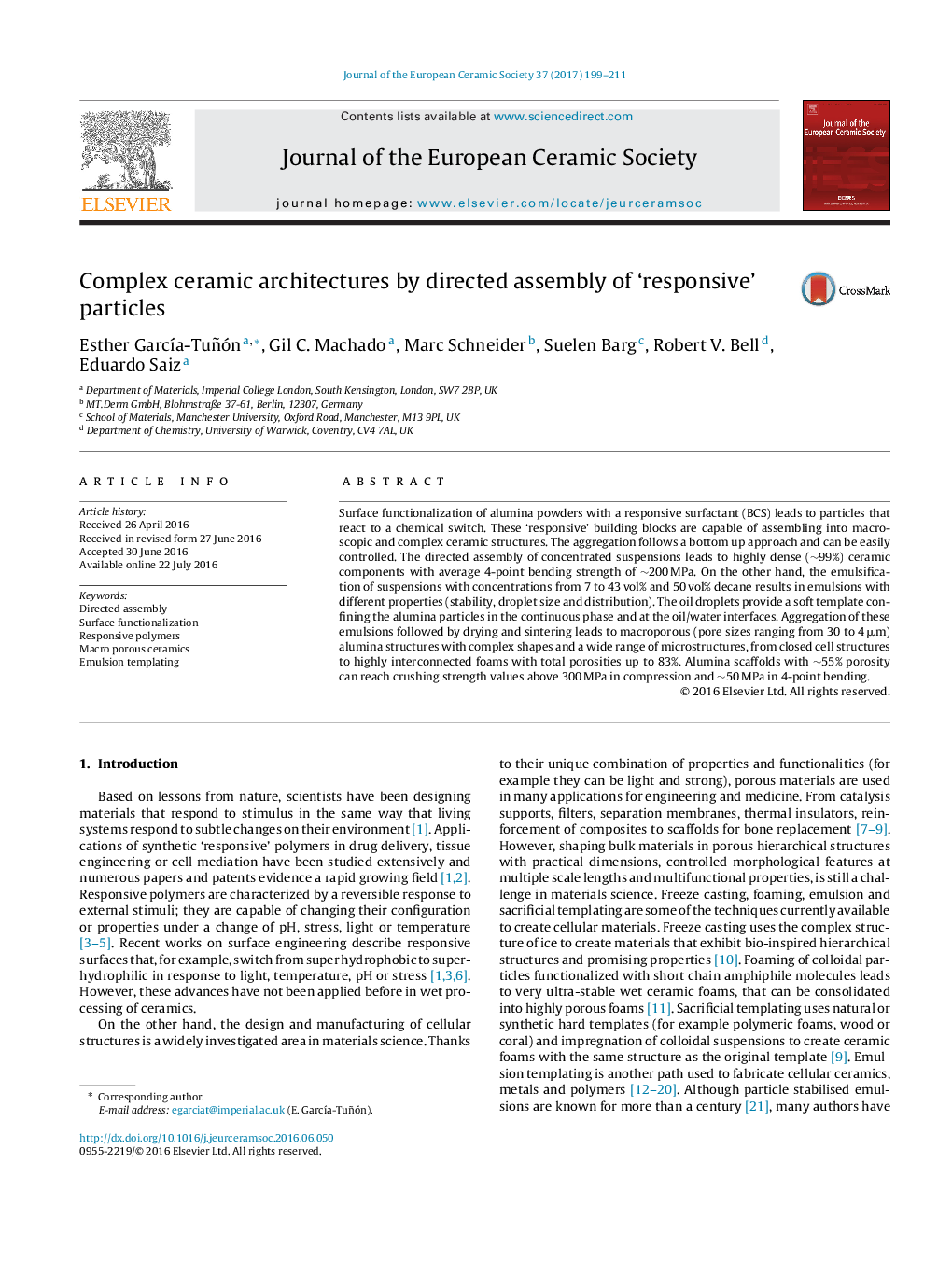| Article ID | Journal | Published Year | Pages | File Type |
|---|---|---|---|---|
| 5440860 | Journal of the European Ceramic Society | 2017 | 13 Pages |
Abstract
Surface functionalization of alumina powders with a responsive surfactant (BCS) leads to particles that react to a chemical switch. These 'responsive' building blocks are capable of assembling into macroscopic and complex ceramic structures. The aggregation follows a bottom up approach and can be easily controlled. The directed assembly of concentrated suspensions leads to highly dense (â¼99%) ceramic components with average 4-point bending strength of â¼200 MPa. On the other hand, the emulsification of suspensions with concentrations from 7 to 43 vol% and 50 vol% decane results in emulsions with different properties (stability, droplet size and distribution). The oil droplets provide a soft template confining the alumina particles in the continuous phase and at the oil/water interfaces. Aggregation of these emulsions followed by drying and sintering leads to macroporous (pore sizes ranging from 30 to 4 μm) alumina structures with complex shapes and a wide range of microstructures, from closed cell structures to highly interconnected foams with total porosities up to 83%. Alumina scaffolds with â¼55% porosity can reach crushing strength values above 300 MPa in compression and â¼50 MPa in 4-point bending.
Related Topics
Physical Sciences and Engineering
Materials Science
Ceramics and Composites
Authors
Esther GarcÃa-Tuñón, Gil C. Machado, Marc Schneider, Suelen Barg, Robert V. Bell, Eduardo Saiz,
